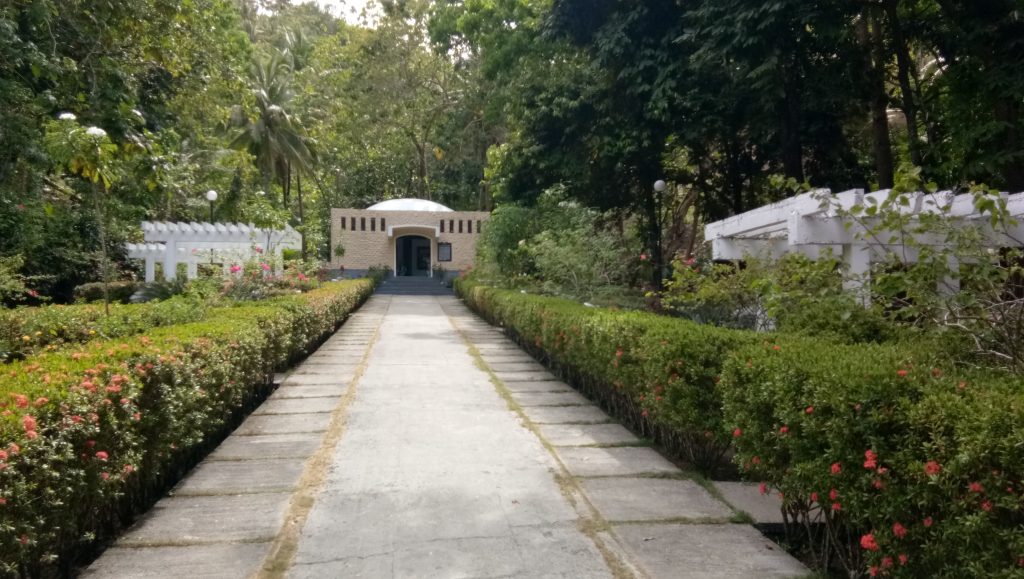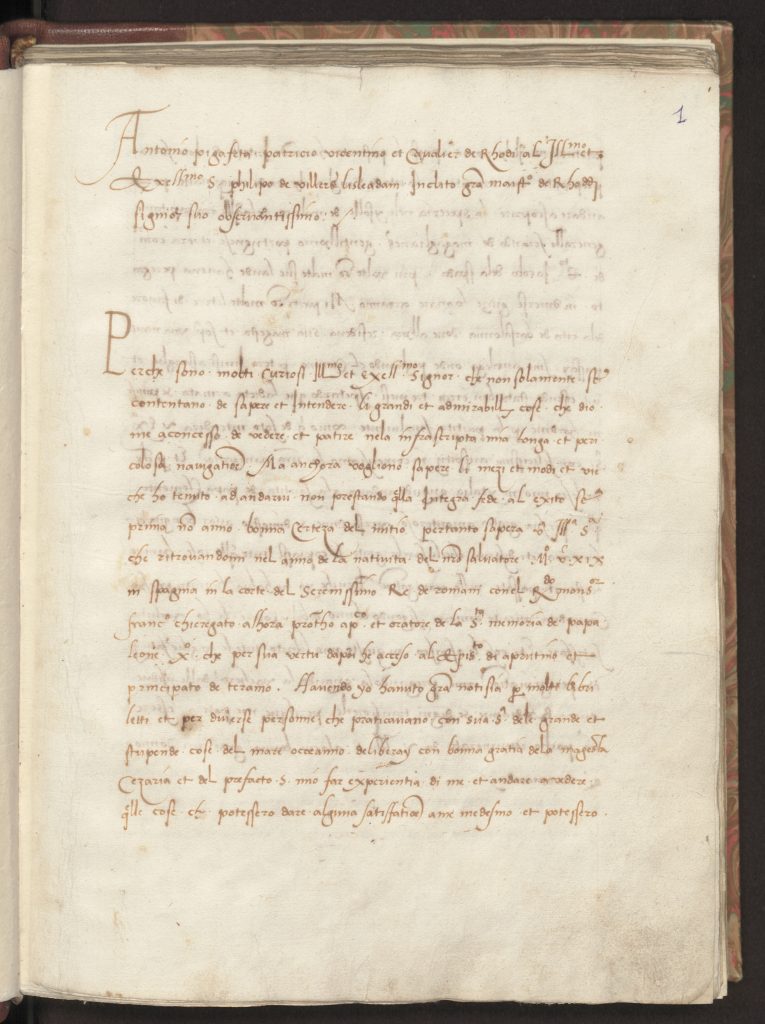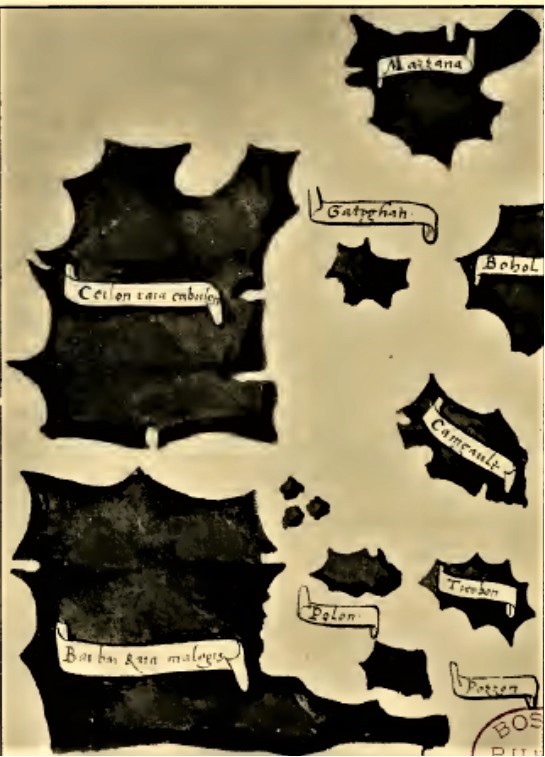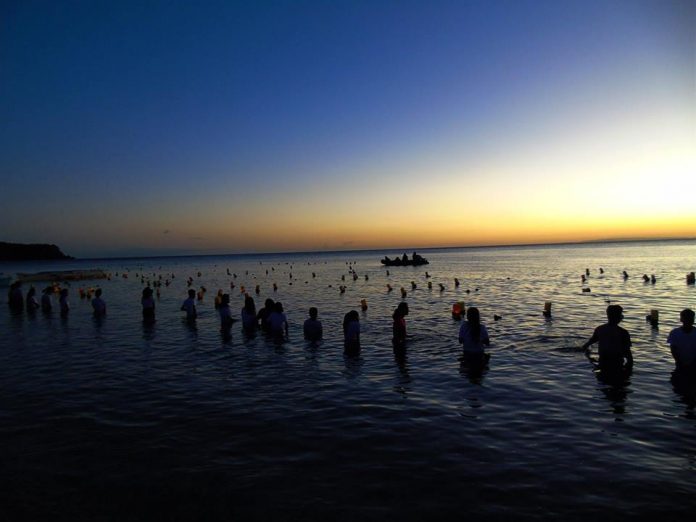As a writer and journalist of a little over 30 years, I’ve had my share of covering historical moments. But nothing beats being right in the thick of a world-shaking event no journalist has ever seen.
And one of these events was the first Easter Sunday Mass celebrated by Father Pedro Valderama, chaplain of the Fernando Magallanes (Ferdinand Magellan) expedition, on March 31, 1521 in the island of Limasawa, Southern Leyte.
Preparing for the Quincentennial of the introduction to Christianity
The exact location wasn’t without controversy. The National Historical Institute, forerunner to the present-day National Historical Commission of the Philippines (NHCP), has dealt with the issue in the past via several panels composed of experts in 1980, 1995 and 2008.
During these discussions, it was concluded that the exact site of the First Easter Sunday Mass was held in Limasawa, Southern Leyte.
The National Quincentennial Commission (NQC) also differentiated the actual event by calling it not the “First Mass” but the “First Easter Sunday Mass” in deference to the mass held allegedly by an Italian-Franciscan friar, Odoric of Pordenone, in Bolinao, Pangasinan sometime 1324.
The significance of the First Easter Sunday Mass in Limasawa was that it was documented by Venetian scholar and explorer Antonio Pigafetta. Also, that it happened on Philippine soil. The Venetian scholar climbed aboard Magellan’s expedition funded under the banner of King Charles I of Spain.
The investigation of new documents which have recently surfaced was prompted by Pres. Rodrigo Duterte’s Executive Order No. 55 or “Constituting A Steering Committee for The Commemoration of The Quincentennnial of The Arrival of Ferdinand Magellan in The Philippines, The Victory of Lapu-Lapu in The Battle of Mactan, and other Historic Events that Happened from 1519 to 1522” signed on May 8, 2018 (amended by Executive Order No. 103, s. 2019).
Executive Order No. 55 formed the Mojares Panel to assist the NQC and NHCP settle the controversy once and for all. The panel consisted of: (1) Chairperson Dr. Resil B. Mojares, Panel’s Historian and National Artist for Literature Professor Emeritus, University of San Carlos, Cebu City; (2) Dr. Danilo M. Gerona, Panel’s Historian and Acting Director, Partido Studies Center, Partido State University, Goa, Camarines Sur; (3) Dr. Francis M. Navarro, Panel’s Historian-Paleographer and Assistant Professor, Ateneo de Manila University; (4) Dr. Carlos Madrid Álvarez-Piñer, Panel’s Historian and Spanish Pacific Historian Director of Research of the Micronesia Area Research Center; (5) Fr. Antonio Francisco B. De Castro, S.J. Panel’s CBCP Representative and Guest Professor, Ateneo de Manila University; and (6) Dr. Jose Victor Z. Torres, Panel’s Secretary General and Panel’s Historian and FGD Moderator, Full Professor, De La Salle University-Manila.

According to the panel report, “The selection of the panelists was carefully done to make sure that all disciplines and expertise are represented. None of the panel members came from Butuan, Leyte or Samar, so they can decide based on the merits of the position papers and not on regional or territorial interests. The NQC also invited the Catholic Bishops’ Conference of the Philippines (CBCP) to monitor and participate actively in this exercise because the event under consideration is identified with the Roman Catholic Church.”
Bone of contention: Butuan or Limasawa?
Early historical tradition placed the First Easter Sunday Mass in Butuan where a monument to the said event was erected near the mouth of the Agusan River.
Based on the Mojares Panel report, “The Butuan tradition can be traced to the 17th century when the earliest mention of the location of the First Easter Sunday Mass was made in two missionary chronicles: Francisco Colin, S.J.’s Labor evangelica (1663) and Francisco Combes, S.J.’s Historia de Mindanao y Jolo (1667).”
However, come 1981, William Henry Scott discovered that Colin’s source was Antonio Pigafetta’s Viaggo atorno il mondo published in Gian Battista Ramusio’s three-volume work, Delle navigationi et viaggi (1550).
Scott observed that Colin had summarized much of Pigafetta’s more detailed accounts including pertinent passages. Not only that, the Pigafetta account used by Colin was a translation by a certain Carlo Amoretti, an Italian ecclesiastical scholar, who, as prefect and conservator of the Ambrosiana Library, practically butchered the Pigafetta manuscript “beyond recognition” through his editing.
The Mojares panel report said, “The controversy over the site began in 1894 after the publication of a new edition of the Ambrosiana manuscript transcribed by Italian archivist Andrea Da Mosto entitled Il primo viaggio intorno al globo di Antonio Pigafetta E Le Sue Regole Sull’arte Del Navigare. (1894). But this time, it was a full transcription that included parts that were missing or edited out by Amoretti. It was in this year that new questions arose on the site of the First Easter Sunday Mass site.”

The shift to the Limasawa tradition, the Mojares panel report said, “happened following the publication of the Da Mosto transcription and the examination of the log of Victoria’s pilot, Francisco Albo. The log appeared for the first time in the collection of documents published by Martin Fernandez de Navarette in 1837.
“Upon study of these two sources, two Philippine scholars—Trinidad Pardo de Tavera and Fr. Pablo Pastells, SJ—concluded that it was a historical error that Butuan was deemed the site of the First Easter Sunday Mass. A reading of the Da Mosto work showed a telling footnote that stated his conclusion following a study of the Albo logbook, the Transylvanus work and another published roteiro (rutter) of one of the expedition’s crewmembers who became known in historical circles as “the unidentified Genoese pilot.”
I spoke to historian and member of the Mojares Panel, Dr. Jose Victor Torres. He said during the celebration of the 400th commemoration of the start of explorations of the New World, not only limited to the Magellan expedition but all expeditions at the time, including Columbus’, the committee handling the studies started filing together all of the accounts of the early explorers.
“The good thing about this effort,” he said, “was that they included the Pigafetta account of the Magellan expeditions. It was during this time that they made a new copy of Pigafetta’s original manuscript, complete with all those edited out which were now included. Pardo de Tavera would eventually discover, via a notation, that the first Easter Sunday mass was held in Limasawa.”
He added that the shrine which we can now see in Leyte, acknowledging Limasawa as the site of the First Easter Sunday Mass, “was erected during the time of Pardo de Tavera”.

Mistranslations, botched editing
Without delving into further discussions on mistranslations and the botched summaries and editing of pertinent documents, especially recent ones like those from Pigafetta, the Mojares panel also checked Pigafetta’s journals where a longitude and latitude where mentioned, pinpointing the exact site of the First Easter Sunday Mass in the Philippines 500 years ago.
The report said, “Pigafetta’s coordinates of 9⁰ 40”N as measured by the researchers with the aid of computers corresponded to Limasawa Island with the coordinates 9⁰ 56’N with only a 0⁰16’ difference in the latitude and a difference of -25⁰19’ from the 125°04′E longitude measured from the Line of Demarcation which was at 162⁰. We must take into account that the researchers have no personal interest in the present controversy and the creation of the map and the inputting of coordinates for its creation was for the sake of scholarship. The fact is that Limasawa Island (with the cited margin of error) coincided with the coordinates that were taken from the Pigafetta journal.”
History and “Cancel” Culture
Dr. Torres stressed that the significance of the findings point to where Christianity was first introduced to the Philippines. “Cancelling out this event in our history just because it was colonial is like cancelling out history altogether,” he said. “This expedition had worldwide implications. It doesn’t mean that just because it had a colonial air to it that we should just shrug it aside. Throw it away. Magellan’s expeditions placed us in the world map. And while the Portuguese have landed in our shores before, in the bigger context of the event, like the circumnavigation of the world, we’re part of that.”
To conclude, Dr. Torres said that the world of the internet and new technology has given them access to pertinent documents which were not available to earlier panels, allowing them a generous peek into historical accounts.
“We’ve been able to get in touch with institutions for original digital copies of the manuscripts. Other sources, including the new transcription of the Pigafetta manuscripts, I accidentally saw it and downloaded it from the internet. It was there all the while. High resolution copies which were not easily accessible at the time are now available, thanks to technology.”
Joel Pablo Salud is an editor, journalist and the author of several books of fiction and political nonfiction. The views and opinions expressed in this article are those of the author and do not necessarily reflect the official editorial position of LiCAS.news.









